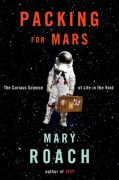 Mike from Ghost is back. While driving through Georgia (the country not the state), our hero is snowed in while in a remote mountain valley. On a whim, he buys the local caravanserai, which also comes with a large farm and most of the valley. He thus inherits the local retainers, a group known as the Keldara. These brew the best beer he has ever tasted, and (of course) turn out to be an ancient warrior tribe. He proceeds to set up a militia to combat Chechen incursions. He is also saddled with a harem of rescued former sex slaves. Storywise, this is more of a set-up book for further novels than anything else.
Mike from Ghost is back. While driving through Georgia (the country not the state), our hero is snowed in while in a remote mountain valley. On a whim, he buys the local caravanserai, which also comes with a large farm and most of the valley. He thus inherits the local retainers, a group known as the Keldara. These brew the best beer he has ever tasted, and (of course) turn out to be an ancient warrior tribe. He proceeds to set up a militia to combat Chechen incursions. He is also saddled with a harem of rescued former sex slaves. Storywise, this is more of a set-up book for further novels than anything else.
While Ringo could have continued to write episodic novels about covert operations ad infinitum, he wisely decided to take the character somewhere completely different, both literally and figuratively. Having established that Ghost is a filthy rich badass former SEAL who likes rough sex and killing bad guys, Ringo decided to make him every man’s wet dream.
It all beggars belief more than a little, but Ringo is unapologetic. There’s also a strong underlying message of the American Way being superior, especially compared to “ragheads from central Asia”. Ringo has written a modern equivalent of John Norman’s Gor Books. There is even a reference in the book. I enjoyed reading it and, like the first, it is a real page turner. It won’t win any literary awards, but that is hardly the objective. Ringo knows exactly which buttons to press with the average male. Sometimes it borders on the insultingly blatant, but that’s fine. This book is actually a guilty pleasure of mine, and I often re-read it when I have nothing else to read. It always entertains.

































